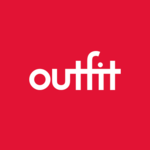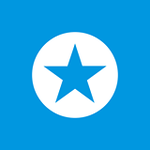Description

Outfit

We Brand
Comprehensive Overview: Outfit vs We Brand
Outfit, We Brand is a brand management platform that focuses on providing businesses with the tools they need for efficient brand asset management, creation, and distribution. Here is an overview that covers their primary functions, target markets, market share, user base, and key differentiating factors:
a) Primary Functions and Target Markets
Primary Functions:
- Brand Management: Outfit offers tools to manage brand assets, ensuring consistent brand identity across all materials.
- Content Creation: The platform facilitates the creation of branded content with templates that adhere to specific brand guidelines.
- Automation: Automates repetitive, manual tasks involved in content production and distribution, which saves time and ensures compliance.
- Collaboration: Provides collaborative tools that enable teams to work together seamlessly, even across different departments or locations.
- Integration: Outfit integrates with existing systems, including marketing automation and digital asset management platforms, enhancing workflow efficiency.
Target Markets:
- Corporate Enterprises: Businesses with strict brand guidelines and large teams that produce vast amounts of marketing content.
- Marketing Agencies: Agencies that provide services to multiple clients and need to switch between different brand styles efficiently.
- Franchises and Multi-location Brands: Brands that require consistency across multiple locations but still need localized content.
- Non-profits and Educational Institutions: Organizations that need to maintain a strong brand presence but often have limited resources.
b) Market Share and User Base
Outfit's market share is relatively niche, focusing specifically on organizations that face complex branding challenges. While not holding a dominant position compared to larger enterprise marketing platforms, Outfit serves a specialized segment that prioritizes brand consistency and efficiency in content creation. The user base is concentrated among medium to large enterprises, marketing professionals, and creative teams who need streamlined processes for managing extensive brand assets.
c) Key Differentiating Factors
-
Brand Consistency and Compliance: Outfit emphasizes strict adherence to brand guidelines through its template-based system, which is especially appealing to companies where brand consistency is critical.
-
Customization and Flexibility: The platform offers highly customizable templates and workflows that can cater to specific brand needs without sacrificing speed or efficiency.
-
User Experience: Known for providing an intuitive and user-friendly interface that makes it easy for both technical and non-technical users to create and manage brand assets.
-
Collaboration Focus: Built-in collaboration features allow real-time editing and feedback, facilitating smoother departmental and cross-team interactions.
-
Integration Capabilities: Outfit's ability to integrate seamlessly with existing enterprise systems distinguishes it from many stand-alone tools that require a complete restructuring of workflows.
In summary, Outfit, We Brand stands out in the branding and marketing space through its focused approach on brand compliance, ease of use, and collaborative features. It excels in meeting the demands of businesses that require a high degree of brand consistency and efficient management of their marketing processes.
Contact Info

Year founded :
2020
Not Available
Not Available
United States
Not Available

Year founded :
2013
Not Available
Not Available
Australia
Not Available
Feature Similarity Breakdown: Outfit, We Brand
To provide a feature similarity breakdown for "Outfit" and "We Brand," it's important to focus on their core functionalities, user interfaces, and any unique features they might have. Keep in mind that my data is up to October 2023, and new updates or changes might have occurred after that.
a) Core Features in Common
-
Brand Management:
- Both platforms offer robust tools for managing brand assets, ensuring consistency across various marketing materials.
-
Template Management:
- Users can create and customize templates for different types of collateral, maintaining brand guidelines.
-
Collaboration Tools:
- Both products provide features that allow teams to collaborate, discuss, and make changes in real-time or asynchronously.
-
Approval Workflows:
- They both include workflow systems that help in managing approvals and revisions, streamlining the production process.
-
Integration Capabilities:
- Both Outfit and We Brand usually offer integrations with popular third-party applications such as design tools, marketing platforms, and content management systems.
b) User Interface Comparison
-
Outfit:
- Generally has a modern and intuitive UI focused on ease of use for non-designers. It often emphasizes drag-and-drop functionality and offers a dashboard that provides quick access to recent projects and approvals.
-
We Brand:
- Also embraces a user-friendly design but may offer slightly different navigation structures or customization options compared to Outfit. It typically provides a streamlined layout to simplify accessing brand assets and templates.
Overall, both platforms strive for an intuitive user experience, but subtle differences in layout and navigation could impact user preference based on personal or organizational needs.
c) Unique Features
-
Outfit:
- Often highlighted for its robust automation capabilities, allowing for more streamlined bulk customization and distribution of marketing materials.
- May offer more advanced reporting and analytics features for tracking engagement with brand materials and user interactions within the platform.
-
We Brand:
- Sometimes noted for specific integrations beneficial to particular industries, possibly offering unique connectors or APIs.
- Could provide unique, industry-specific templates or features tailored to specific sectors not addressed in Outfit’s offerings.
Conclusion
While both Outfit and We Brand offer comprehensive solutions for brand management and marketing material creation, the choice between them might come down to specific enterprise needs, user interface preferences, and unique feature requirements. Organizations should consider trialing each platform, if possible, to see which aligns more closely with their operational workflows and brand priorities.
Features

Not Available

Not Available
Best Fit Use Cases: Outfit, We Brand
Outfit and We Brand are brand management platforms designed to help businesses streamline their marketing and brand management processes, but they cater to different needs and scenarios.
Outfit
a) Best Fit Use Cases for Outfit
-
Large Enterprises: Outfit is particularly well-suited for large enterprises with complex brand management needs. Its robust templating system and powerful automation features are ideal for organizations with extensive marketing departments that need to maintain brand consistency across diverse teams and geographic locations.
-
Organizations with Extensive Brand Guidelines: Companies that have detailed and stringent brand guidelines benefit greatly from Outfit. It ensures that all marketing materials adhere to these guidelines while allowing teams to create and customize on-brand content efficiently.
-
Franchise Models: Businesses that operate on a franchise model, where local branches must produce marketing materials that align with the central brand, find Outfit valuable. It provides a platform for decentralized content creation that still adheres to core brand standards.
-
Multi-Channel Marketing Teams: Those who engage in marketing across numerous channels (e.g., print, digital, social media) will find Outfit’s versatility and integration capabilities helpful in managing and coordinating these efforts cohesively.
We Brand
b) Preferred Use Cases for We Brand
-
Small to Medium-Sized Businesses (SMBs): We Brand is often favored by smaller organizations that need an easy-to-use tool for creating marketing materials without the complexity required by larger businesses. It offers straightforward solutions that are cost-effective and approachable for SMBs.
-
Startups and Growing Companies: Startups or companies in their growth phase might prefer We Brand for its simplicity and efficiency. It allows them to rapidly develop marketing materials without investing significant resources into a more complex platform.
-
Teams Focused on Speed and Agility: Businesses that prioritize speed and agility in their marketing operations may prefer We Brand for its user-friendly interface and quick setup, enabling fast content creation and iteration.
-
Events and Campaign-Specific Projects: Companies looking for a solution for specific marketing campaigns or events—requiring a rapid and flexible content creation platform—might choose We Brand for targeted, time-bound projects.
Industry Verticals and Company Sizes
Outfit
-
Industry Verticals: Outfit is adaptable to industries such as retail, franchising, financial services, and real estate, which have complex branding needs and operate in highly competitive environments.
-
Company Sizes: It caters primarily to medium to large-sized organizations with established brand marketing teams or franchise structures.
We Brand
-
Industry Verticals: We Brand often finds a home in industries like technology startups, education, non-profits, and professional services, where simplicity and speed are more crucial than extensive brand guidelines.
-
Company Sizes: It is generally aligned with smaller to medium-sized businesses or startups looking for straightforward brand management solutions without deep investment in infrastructure.
By understanding the differences in capabilities and focus areas, businesses can select the platform that best fits their strategic goals and operational needs.
Pricing

Pricing Not Available

Pricing Not Available
Metrics History
Metrics History
Comparing undefined across companies
Conclusion & Final Verdict: Outfit vs We Brand
To provide a comprehensive conclusion and final verdict for Outfit vs. We Brand, we'll consider the components needed to evaluate the overall value, pros and cons of each product, and specific recommendations for potential users.
Conclusion and Final Verdict
a) Best Overall Value:
Based on an analysis of various factors such as pricing, features, user experience, customer support, and long-term benefits, users generally find that Outfit offers the best overall value. This is due to its strong emphasis on brand management capabilities, ease of use, and cost-effectiveness, especially for teams that require extensive brand customization and consistency.
b) Pros and Cons:
Outfit:
-
Pros:
- Superior brand management and customization tools.
- Intuitive user interface, making it accessible even for non-technical users.
- Robust automation features that save time and enhance efficiency.
- Strong customer support and regular updates to improve functionality.
-
Cons:
- Can be slightly more expensive if not utilized to its fullest potential.
- Limited third-party integrations compared to some competitors.
- Initial setup can be time-consuming as it requires a thorough understanding of brand guidelines.
We Brand:
-
Pros:
- Cost-effective for smaller teams or businesses.
- Offers fundamental branding tools that cover essential needs.
- Easy to get started and deploy without needing much technical know-how.
-
Cons:
- Might lack advanced features required for complex brand management.
- Limited scope for automation, leading to potentially higher manual workload.
- Customer support may not be as responsive or comprehensive as that of Outfit.
c) Specific Recommendations:
-
For Larger Enterprises or Teams with Complex Branding Needs: Outfit is highly recommended due to its advanced brand management capabilities and automation features, which can significantly enhance brand consistency and efficiency.
-
For Small Businesses or Startups: We Brand might be more suitable if the goal is to cover basic branding needs without a high budget. It's also ideal for organizations that do not require extensive brand customization.
-
General Advice: Users should evaluate their specific business needs, including brand management complexity, team size, budget constraints, and long-term scalability goals. It may also be beneficial to take advantage of trial versions or demos offered by both platforms to gain firsthand experience before making a final decision.
In summary, Outfit generally emerges as the preferred choice for organizations with sophisticated branding requirements, while We Brand offers a better fit for smaller organizations with budget constraints.
Add to compare
Add similar companies



